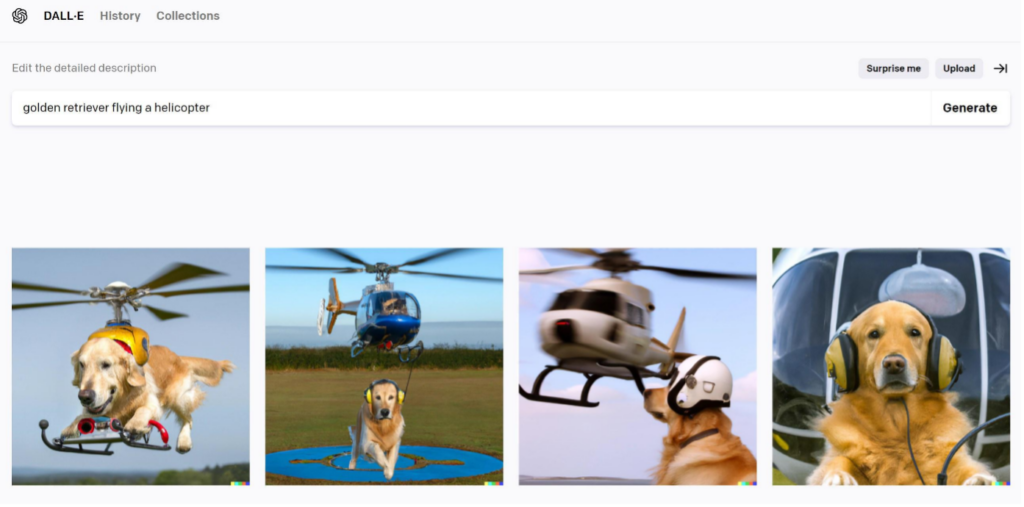Leveraging AI-Generated Content for Retail
Artificial intelligence (AI) has dominated the list of buzzwords used in the data and analytics space for years, but new leading-edge AI companies are aiming for a new market: content generation. What was once thought of as an untouchable space for algorithms, creative realms such as artistic design and content creation are now being viewed as the next leap in technological enhancement for retail businesses. When competing in a content-dominated market, this emerging technology of AI-generated content can dramatically expand business opportunities for retailers.
How Does it Work?
AI content generation tools use a series of natural language processing (NLP) and natural language generation (NLG) models to turn a couple of keywords and prompts into long form content. They do this by crawling billions of bits of content from the web and creating patterns within relevant speech that we recognize as normal written language. The more data that the algorithms have to work with, the “smarter” or more complex they can become.
AI-Generated Content Use Cases
Companies are increasingly viewing Artificial Intelligence as a viable option to automate specific functions of a retail business – the main accelerant here being deflationary effects to human capital. Imagine all retail businesses’ ad copy being written in minutes using clear, coherent messaging instead of theorizing multiple formats and testing them for appeal. Instead of hiring freelance writers to help you produce content for your site, you have multiple articles and posts generated around a particular topic only using a couple of keywords and for pennies on the dollar.
Here are some tangible use cases that retail businesses can consider as they start to understand where AI could be used for their brand:
Ad Copy & Creative
A clear use case for brands using AI tools is creating new, lost-cost, copyright-free images for ad copy or creative. These images are created via text-to-image converters such as DALL–E 2 that can transform text into a visual that has never existed before. This can be a goldmine for images to use to convey your brand and even provide creative avenues for new ideas.
Here’s an example of AI-generated hats that a brand could use to create new styles!

Written Content
Blog posts, articles, listicles, how-to articles, and user-based personalization are all examples of use cases for written content, for which brands can leverage AI to produce cost-effective content. Similar to image-to-text applications, written content AI platforms such as Jasper help brands generate unique content based on a couple of key inputs from the users. These platforms also act as complementary software solutions to help improve content by using AI to take an existing piece of written content and rewrite it to make it more interesting, engaging, or creative.
Video/Audio
Similar to image creation using keywords and crawlable algorithms, text-to-video is a relatively new space. High-impact creatives, short clips, and training videos are all use cases here for retailers to leverage. Platforms like Synthesia allow brands to create professional videos saving on cameras, microphones, and hours of creative thinking work.
User Experience
Chatbots were among some of the first use cases for content generation from AI and machine learning (ML). Customer inquiries and customer happiness are essential qualities to a brand and can drastically help or hurt conversion rates. Automating these product-related customer inquiries with a 24-hour service availability can provide brands with a low-cost option.
Drawbacks
AI content generation has taken leaps over the past couple years but is still far from being perfected. There’s still a real need for creative professionals to guide these tools to give a human touch to the AI depictions, and the true meaning of nuance in language is not fully understood. This is best seen in images produced by OpenAI’s DALL-E 2, an AI system that creates realistic images from just a few keywords.
In the example below, DALL-E is taking the prompt “golden retriever flying a helicopter” in multiple (interesting) directions. This creates a fascinating phenomenon where all these options are somewhat accurate to the given prompt, but obviously there are many depictions that could mix the nuance of the original goal of the prompt.

AI-Generated Content: Moving Forward
AI content generation presents retail businesses with great cost-saving opportunities to outsource creative, automated content creation, improve user personalization and user experience, and more. Retail brands will still need help managing these tools to drive the focus and nuance (for now) as AI platforms continue to learn and grow, but like most new products centered around data, the space and use cases are growing exponentially.
For help with navigating emerging trends and technology in retail, Clarkston can help.



